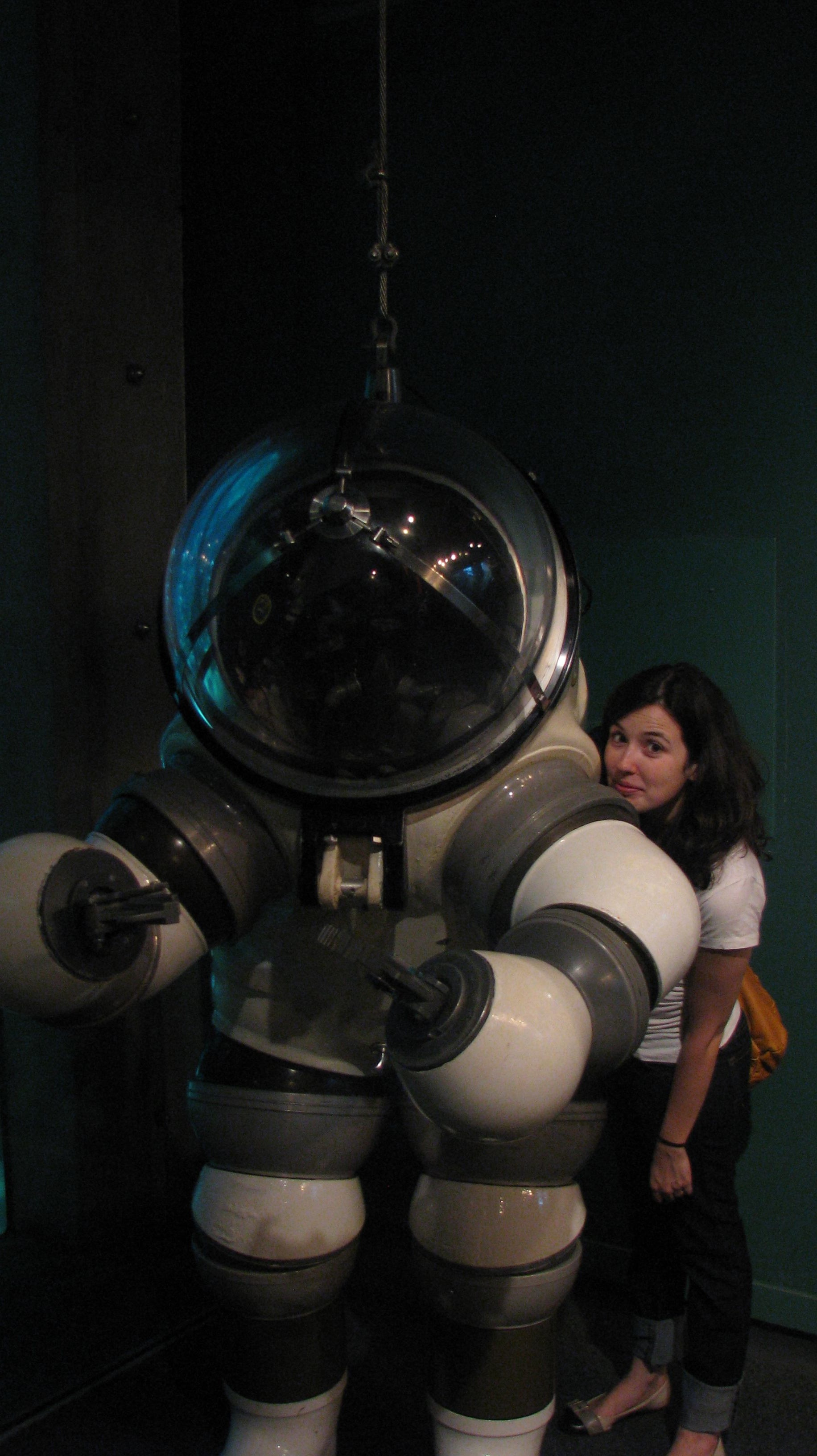I never thought I’d ever write about football. Need to bite tongue. For PLOS Sci-Ed I wrote about the Washington Redskins and their star, Robert Griffin III. I focused, however, on all the knee anatomy lessons we got from NFL.
The Redskins might not be doing so well anymore, but my team (FSU Seminoles) is #1. I’m hooked and may not stop so soon.
Here’s the post (originally published Sep 23rd for PLOS Sci-Ed):

Here goes his ACL. What can we learn about injury and human anatomy by watching sports. Source: Simon Bruty/SI
The star that night was not a quarterback, but his knee.
It was Monday Night Football and season opener for the Washington NFL team when I joined friends to watch the game at a sports bar. Between bites of chicken wings I saw one particular scene that amazed me. I’m not talking about a touchdown, but of a 3D animation with a Toy Story-like human in a hospital gown undergoing knee surgery. And I was not the only one surprised:
The game biggest star, quarterback Robert Griffin III (RGIII for the fans), suffered an injury earlier this year. Fans anxiously awaited his return and kept busy speculating about the athlete’s medical treatment and recovery. So it was during the new season’s opener, on the player’s return to the field, that the surgery was explained in detail. With it, TV viewers also learned about the structure and anatomy of the knee. Apparently, NFL is in the business of teaching human anatomy lessons.
—
Most of what I write for this Sci-Ed column is about science outreach. How to bring science to the general public? I’ve covered museums and zoos, but I’ve also mentioned before that a lot of people (including children) don’t have access or don’t get exposed to these resources. I even talked about an initiative to place museum collections in shopping malls, but I haven’t mentioned teaching science in a sports arena.

Source: Bureau of Labor Statistics
The graph above shows how Americans spend their free time. They spend around 6% of their time playing sports, but 56% of their free time watching TV. Can we take advantage of that TV-watching time and populate it with science tidbits? Or even capture that “computer leisure” time segment (8.6%) and instill it with some sports articles filled with anatomy information?
I’m not necessarily a sports fan (unless Brazil is playing the World Cup of soccer), so I’m late the game. The media (and Internet) sports coverage has been doing a good job in teaching human anatomy. It seems every football fan has now learned the intricate anatomy of the knee, elbow and shoulder. Anatomy teacher (and Sci-Ed contributing guest) John Romano told me that “It is amazing how I have conversations about this stuff with non-science friends and they have a good knowledge of anatomy due to sports.”
With increased need to offer novelty (new commentators, experts, or visual aid) ESPN and online articles are turning to science. An article about another famous knee (Maurkice Pouncey’s, who tore his ACL and MCL) is illustrated with knee anatomy diagrams; other expert articles replace diagrams with the real deal; and ESPN recruits doctors to speak live. Dr. Greg Wells created instructional videos based on sports. I even saw a field reporter hold a plastic skeleton foot to demonstrate where the metatarsus is (and it’s relation to injury). In most cases, language is clear and straightforward. For example, consider this excerpt from author Dr. Dave Siebert: “Over the next months and years, a fascinating process called ligamentization takes place. During ligamentization, the body transforms the tendon into tissue more closely resembling the native ligament.”

Source: Washington post, Alberto Cuadra.
Let’s get back to our initial star, Robert Griffin III’s knee. In this clip (very similar to the one I saw during the game), Dr. Rahul uses a plastic model knee to explain the quarterback’s injury, with great accessible language: “you have three straps holding your knee together, ok, there’s the lateral strap, there’s the inside strap which we call the MCL, and there’s one down in the middle called the ACL”. Robert Griffin’s knee injury, surgery, and recovery have been under so much scrutiny that every football fan has become an expert. (In fact, this article comments that “the road to recovery has been […] over-covered [e]very story, half-story and morning Starbucks order was covered.” Such is the irony of covering the over-coverage.) John Romano also observed this phenomenon in baseball fans, who “are becoming super involved in the shoulders of their favorite team’s pitchers.”
—
Is sports TV educating their viewers? Our resident medical expert Dr. Silvana Russo firmly believes “it is always fun to see science knowledge popularized.” ESPN is perhaps making human anatomy as popular as other well-known scientific theories (e.g., the big bang theory, or evolution).
I asked my husband (a football fanatic) to spell out ACL. “Arterial something ligament”, he said. It actually means “anterior cruciate ligament”, but a non-scientist is not expected to know that. The abbreviation works just fine. I’m a scientist with some formal knowledge of anatomy 101 (which I described here), but I did not know what a Lisfranc injury was, unlike my husband who did. It seems a football enthusiast knows the geography and function of a knee or a foot better than I do.
The use of celebrities (or like Atif Kukaswadia said, “science heroes”) won’t hurt. There was a competition for attention on Robert Griffin’s knee, and science education benefited from it. After that, I’m ready to name the Griffin (or his knee) the anatomy spokesperson of the year.



